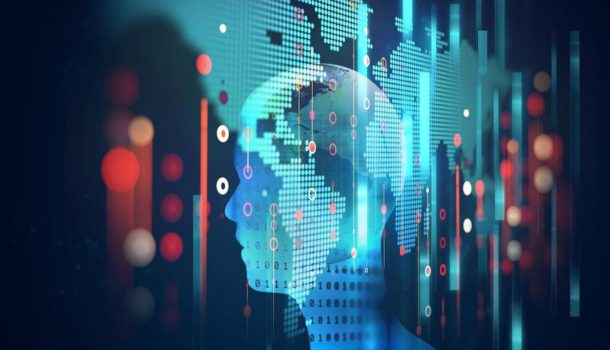Still in the early stages of development and use, artificial intelligence, machine learning, and deep learning are already impacting how we live, work, and play. Is your organization ready to embrace and leverage these disruptive innovations?
BY FAISAL HOQUE
When it granted citizenship to Sophia, a robot manufactured by Hanson Robotics, Saudi Arabia became the first country in the world to publicly embrace the close relationship between artificial intelligence (AI) and “real life.” Designed in the image of Audrey Hepburn, this Saudi citizen has already become somewhat of a celebrity, appearing on the Tonight Show and at various global conferences.
Sophia isn’t alone. In fact, we’ve been using AI in our daily lives for decades. From voice recognition on all smartphones to robots that help you clean the house to virtual assistants that remind you about upcoming business meetings, AI has already proven itself to be a great provider of information, learning, reasoning, planning, and communicating.
Defined as the effectively simulation of human intelligence processes by computers, AI also incorporates the concepts of machine learning and deep learning. The former comes into play when AI gives inanimate systems the ability to automatically learn and improve from experience (a very “humanlike” trait), while the latter gives computers the ability to learn without being explicitly programmed.
Machine learning helps companies like Uber determine arrival times for rides, estimate meal delivery times on UberEATS, and compute optimal pickup locations. Google uses deep learning for voice and image recognition algorithms and Amazon employs it to help determine what customers want to watch or buy next.
Three Ways AI Already Impacts Us Today
Because AI, machine learning, and deep learning can all be loosely grouped under the same umbrella, its best to think of the trio working in concert to help organizations work smarter, better, and faster. And while all three are still in their infancies on the technological growth curve, it is already impacting in ways that we may not even realize. Here are three of them:
Simplify our daily lives. According to a Forbes article, $62 billion is lost through poor customer service — a deficit that continues to increase with every passing year. AI can help plug that leak by going above and beyond what humans are able to do. Digital assistants have already become common and acceptable shoulders to lean on in daily life — and we can expect them to play an even larger role in our lives in the future — but they are just the beginning. A recent PwC survey unveils that most consumers see AI simplifying their daily lives in the immediate future:

Makes our governments more efficient. AI and machine learning have the potential to significantly reduce and contain ongoing operational costs for public sector agencies. Consider the following examples:
- The Army’s Medical Department is developing wearable monitors that use a machine-learning algorithm to weigh the potential seriousness of wounds, to assist medics in prioritizing treatment or evacuation.
- The White House and US Customs and Immigration Services use chatbots designed to answer basic questions and leave complicated responses to a human.
- The US Postal Service uses handwriting recognition to sort mail by ZIP code; some machines can process 18,000 pieces of mail an hour.
According to a recent Deloitte study, using AI to automate federal government tasks now performed by employees would save at least 96.7 million working hours a year, a cost savings of $3.3 billion. Combined with better, faster, and accurate services with the incentive to cost reduction will continue to drive adoption of AI in government sector.
Addresses business’ toughest challenges. Take manufacturing industry as an example. Industrial revolutions have taken us from mass production to automation. It’s been more than half a century since the first robots worked on production lines. And now, manufacturing, dubbed as Indusry 4.0 is getting smarter as it adopts AI, machine learning, and the internet of things (IoT). Data from customers, partners, market, factory floors, and warehouses can be collected, integrated, analyzed, and predicted — allowing companies change the way they make and ship products and goods with efficiency and accuracy.
Manufacturing is not the only example of AI usage; it has also been impacting every sector of the market to solve complex business problems.
For example, many large financial institutions have invested in AI engines to assist with their investment practices. A report from American Banker highlights how wealth management company BlackRock’s AI engine, called Aladdin, is used internally to help inform investment decisions; its also offered to customers and nearly 30,000 people use the system. Aladdin has a wide range of functionalities including the use of natural language processing to read text such as news, broker reports, and social media feeds. The system then assists users with investment decisions.
Where Should You Begin?
Both nebulous and complicated by nature, AI and the movements that it’s fueling all require a highly specialized skillset. For it to work, people must connect the dots between the AI and how it can be effectively applied in the private or public sector. That’s not always easy to do — and the very notion of it may be scary to some who think that the day when machines “take over” isn’t that far off — but the positive results are already being documented and talked about.
As AI, machine learning, and deep learning continue to evolve and mature, it’s time for every organization start experimenting with the many ways these technologies are helping organizations work smarter, better, and faster. So how do you get started?
It starts with the business strategy. Your organization may not have a formal, codified method for making predictions about the future, but it definitely has a business strategy. Such strategies arise from some set of assumptions about what changes are afoot — accurate or otherwise.
It that takes a self-examination. Start by taking these steps:
- Closely examine your current strategy, right here in the present. How well is your team executing your current plan? What changes are needed today? Consider those execution methods from the perspective of your immediate situation to determine whether utilizing AI is likely to make your organization more effective.
- Analyze the impact of your current work of your team, partners, and customers. Where are the most obvious places your results can be improved or revenue increased?
- Evaluate your present capabilities for making those improvements. What assets and resources do you have at your command to begin experimenting with AI?
The assumptions you’re making about the future are embedded directly in the way you’re doing things right now. Closely reexamining your existing processes can make it easier to see the type of future that your current strategy assumes you’re heading toward.
An essential part of any future transition requires both left-brained (analytical) and right-brained (creative) talent and culture. Value creation process from AI is no different. It begins with generating right ideas and ends with effective execution.
Related:
Copyright © 2017 by Faisal Hoque. All rights reserved.
[Featured Image: Georgia Tech]















